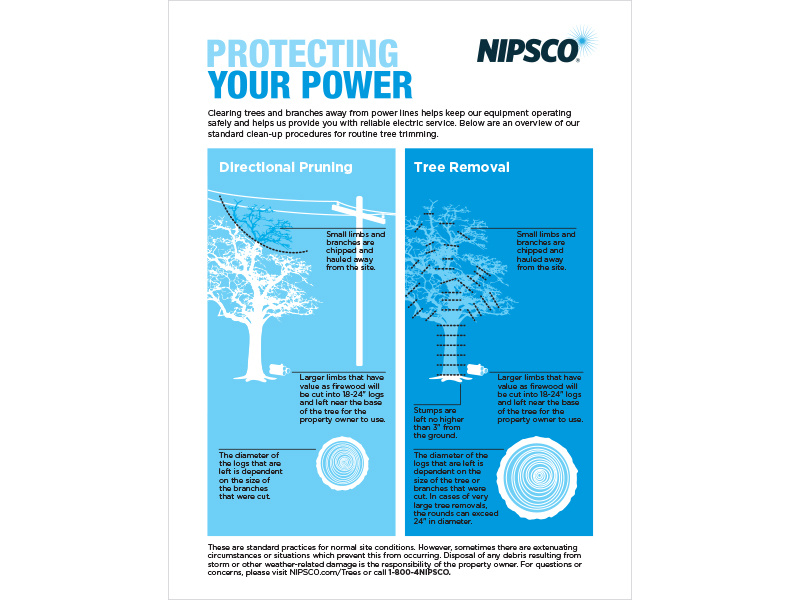The Environmental Influence Of Tree Elimination: What You Must Know
The Environmental Influence Of Tree Elimination: What You Must Know
Blog Article
Content Writer-Juarez Walker
When it concerns the ecological effect of tree removal, there are important facets that demand your attention. From the elaborate web of relationships within communities to the succeeding results on environment patterns, the effects are extensive. You may be surprised to discover the complex ways in which the removal of trees can reverberate throughout the environment. Keep tuned to decipher the elaborate connections and implications of this apparently uncomplicated act.
Deforestation and Environment Loss
Deforestation and habitat loss are vital problems stemming from tree removal. When trees are lowered, it interferes with entire ecosystems. Not only are the trees themselves lost, but the homes and food resources of numerous plant and animal species are damaged also. Birds lose their nesting websites, mammals shed their sanctuary, and bugs lose their environments. The results surge with the food chain, affecting killers and victim alike.
In addition, logging adds to environment modification. https://reidotttt.blogsvila.com/33181680/the-financial-aspects-of-tree-elimination-important-facts-to-be-familiar-with play a crucial function in soaking up carbon dioxide, a greenhouse gas that catches warmth in the atmosphere. With less trees, there's much less co2 absorption, causing boosted levels of this gas in the environment and exacerbating worldwide warming.
Habitat loss is a straight result of deforestation, as the devastation of woodlands means the loss of one-of-a-kind and diverse environments. Numerous species are unable to adapt to rapid changes in their setting, bring about population declines and, in many cases, extinction.
Protecting forests is necessary to maintaining the fragile balance of nature and ensuring the survival of plenty of plant and pet species.
Effect on Biodiversity
The removal of trees has a substantial effect on biodiversity, influencing the variety and abundance of plant and pet types in a location. Trees provide habitat and food resources for many microorganisms, from bugs to birds to creatures. When trees are eliminated, these species shed their homes and resources of food, resulting in a decrease in their populations. This interruption can have cascading results on the entire environment.
Moreover, trees play an important function in maintaining biodiversity by developing microhabitats within their canopies, trunks, and origins that sustain a vast array of types. When trees are reduced, these specialized environments are damaged, decreasing the overall variety of the area.
In addition, the elimination of trees can bring about a decrease in genetic variety within plant populaces, as certain tree varieties may no longer have the ability to replicate or spread properly. Securing trees and woodlands is vital for maintaining biodiversity and ensuring the wellness of ecological communities for future generations.
Dirt Erosion and Environment Change
With trees being gotten rid of from an area, the disruption of soil framework and stability occurs, causing enhanced dirt erosion. Trees play a vital function in avoiding disintegration by holding soil in place with their root systems. When trees are gotten rid of, particularly in great deals, the soil becomes extra vulnerable to disintegration from wind and water. This disintegration not only impacts the instant surroundings however can likewise cause sedimentation in neighboring water bodies, affecting water quality and water environments.
Furthermore, https://www.recordnet.com/story/lifestyle/home-garden/2020/07/23/whatrsquos-growing-on-edible-landscape-is-good-for-table-world/112692334/ assist manage the climate by soaking up carbon dioxide during photosynthesis. When trees are cut down, this all-natural carbon sink is decreased, contributing to boosted levels of greenhouse gases in the atmosphere. This can worsen environment change, causing more extreme weather condition events and interruptions in ecosystems worldwide.
For that reason, the removal of trees not only speeds up dirt disintegration but also plays a role in the bigger ecological problem of environment change. It's essential to take into consideration these aspects when examining the impacts of tree removal on the setting.
Conclusion
Now that you understand the ecological effect of tree removal, think about the consequences prior to reducing trees. Deforestation disrupts communities, decreases biodiversity, and contributes to soil erosion and environment modification. By being mindful of the impact of tree removal, you can help protect our atmosphere and preserve the fragile balance of nature. Make informed selections and take into consideration alternate remedies to lessen the negative effects on our planet.
